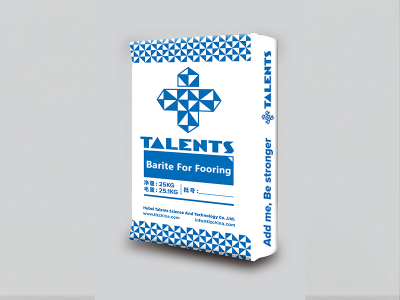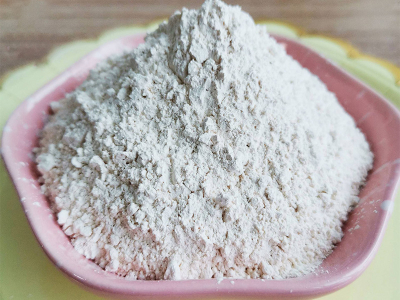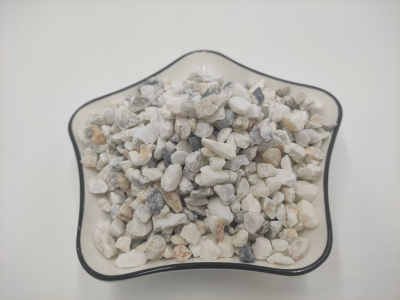Global barite resources, production and consumption status
Global barite resources, production and consumption status
Barite is a sulfate mineral of barium, and its main component is barium sulfate (BaSO4). Barite is an important non-metallic raw material mineral. It has the advantages of high density, insoluble in water, non-toxic, easy to absorb radiation, and good filling. It is widely used in chemical industry, building materials, metallurgy, textile, electronics, building materials, etc. , medicine and more than ten industries. my country is the largest barite producer in the world, and barite resources were once a dominant mineral in my country. However, the long-term extensive growth, excessive resource consumption, and waste and recycling problems in the process of mining and utilization have made my country competitive in the international market. gradually at a disadvantage.
1. Status of barite resources
1.1 Overview of global barite resources
The world is rich in barite resources, with a resource volume of about 2 billion tons. The distribution is relatively concentrated, mainly in China, Kazakhstan, India, the United States, Morocco, Russia, Algeria and other countries. Among them, Kazakhstan has the largest barite reserves, accounting for about 30.47% of the world's total reserves.
Several countries with large reserves of barite in the world are also major producers of barite in the world. China has always been the world's largest barite producer, with an average annual barite output of about 3 million tons, India's annual barite output of about 1 million tons, and the United States and Morocco's annual barite output of about 500,000 tons. The average annual barite output in Kazakhstan is about 150,000 tons.
1.2 Overview of barite resources in China
According to the genesis of deposits, barite deposits can be divided into three types: hydrothermal type, sedimentary type and residual type. The main period of barite mineralization in my country is the Paleozoic, during which sedimentary deposits and hydrothermal deposits are the main barite deposits. There are also some volcanic sedimentary deposits and residual slope deposits with smaller reserves.
In 2016, my country's barite reserves were 30 million tons, a considerable part of which came from the Tianzhu Dahe barite deposit in Guizhou, which is currently the largest proven barite deposit in the world. Guizhou has the largest reserves of barite resources in China, and is known as "the hometown of barite in China".
Regional distribution of barite resources in my country
2. Development and utilization of barite in my country
2.1 Processing of barite
my country's traditional barite industry mainly produces low value-added primary products, including weighting agents for oil and natural gas drilling mud and barium-containing chemical products, and the production process causes great pollution to the environment. In order to improve the added value of barite minerals, the low-grade barite minerals can be purified and processed by physical and chemical methods, so that they have new functions and uses, and the utilization value of barite minerals can be improved to realize resources. It provides a new idea for the processing of traditional non-metallic mineral resources in my country.
After basic purification, barite can meet the requirements of producing primary barium salts, but some fine and specialized products still cannot be produced and need to be imported. If the surface modification of barite ore powder is carried out, the original physical and chemical properties of the powder surface can be changed purposefully, and its dispersibility and affinity with polymer materials will be improved, which will make it have a wider application prospect. Commonly used surface modification methods include surface wrapping modification, mechanochemical modification, and high-energy surface modification. Commonly used modifiers include surfactants, coupling agents, and metal oxides.
Process flow for producing barium carbonate with barite
2.2 Main applications of barite
The main component of barite is barium sulfate, which has a large specific gravity and can absorb X-rays and γ-rays. The drilling industry (rigs) is the largest consumer sector.
(1) Oil drilling: Barite has a large proportion. Adding it to the oil well can cool the oil well drill bit, take away the debris cut by the drill bit, seal the hole wall, lubricate the drill pipe, control the oil and gas pressure, and prevent the oil well from blowing out.
(2) Chemical products: The main component of barite is BaSO4, which can be used to produce various barium compounds such as barium carbonate, barium chloride, precipitated barium sulfate, zinc barium white, barium hydroxide, and barium chloride.
(3) Glass: Barite with higher purity is used as deoxidizer, clarifying agent or co-solvent of glass, which can enhance the optical temperate, gloss and strength of glass.
(4) Paper, rubber, plastics, coatings: barite can be added to organic materials such as rubber as a reinforcing agent, brightening agent or filler, giving new materials new functions and increasing added value.
(5) Construction: Because barite can absorb X-rays and γ-rays, it can be used as concrete aggregate instead of lead plates for special buildings such as atomic energy plants and X-ray laboratories; used as paving materials, Extend the life of the road surface, etc.
2.3 Production overview of barite
Barite is mainly used in oil and gas production, and the global barite production generally shows an upward trend, but it is significantly affected by the oil and gas market and the world economic situation. For example, due to the impact of the world financial crisis in 2009, global oil and gas production declined, so the production of barite also declined. In the past 30 years, China's barite production has shown an overall upward trend, ranking first in the world. In 2016, China's barite production was 2.8 million tons, accounting for nearly 40% of the global total. Global barite production in 2016 was nearly 4% lower than in 2015.
Trend of global barite production from 1970 to 2015
1970-2015 China's barite production and the change in the proportion of global total production
2.4 Consumption Overview of Barite
85% to 90% of the world's barite is used in the field of oil and gas drilling, the proportion of which is used in chemical products is 8%, and the other accounts for about 4%. About 50% of barite in China is used in oil and gas drilling.
China is the largest barite producer and exporter, and the United States is the world's largest barite consumer. Changes in its barite consumption have a great impact on global production and trade. In 2016, the United States consumed 1,450.3 kilotons and produced only 422.6 kilotons. Between 2012 and 2016, consumption in the United States dropped from 3,430.3 kilotons in 2012 to 1,450.3 kilotons in 2016, with a large impact on total global consumption.
China's barite market consumption structure
Changes in the import volume of major barite importing countries in the world
According to the "Global Barite Products Market Research Report 2018" released by QY Research, the global barite consumption is forecast to reach 6,338 thousand tons in 2023, and its price will rise to US$86/ton. According to domestic chemical, petroleum and other needs, China's apparent consumption of barite in the next few years is forecast to be 1.54 million t in 2018, 1.78 million t in 2020, and 2.56 million t in 2025.
3. Thoughts on the development of my country's barite industry
3.1 Problems existing in the development and utilization of barite in my country
(1) The waste of domestic barite resources is serious, and the reserves of barite resources have dropped sharply. In the process of barite mining in my country, due to the backward technology of most enterprises, a serious waste of resources has been caused. Excessive exploitation of some enterprises has accelerated the depletion of barite resources. According to incomplete statistics, my country's existing barite resources can be exploited for less than 70 years.
(2) The export advantage of barite has been impacted. India is our main competitor. India is rich in reserves, and the proportion of production is much lower than that of China. India is also a supplier of barite to the United States, and on the CIF price of the Gulf of Mexico, the price of barite in India is slightly higher than that in China. At the same time, India is also the main trading partner of the Middle East countries, and my country has a small market share in the Middle East. In the future, this competitive relationship between China and India will continue. In addition, the barite export policy is not perfect, there are long exports and unlimited exports, and the degree of deep processing is not high.
(3) The domestic barite lacks industrial organization, and the market order is chaotic. There are too many barite business enterprises in my country. In the process of barite production, there are generally chaos such as indiscriminate mining, mining rich and abandoning poverty, backward technology, and chaotic management. Moreover, the production cost is low, and barite export enterprises are competing with each other. Depressed prices and chaotic export operations are also important reasons for my country's long-term low-priced barite exports.
3.2 Countermeasures and Suggestions for Sustainable Development
(1) Promulgate relevant management policies to control the export volume.
(2) Establish a barite industry organization and strengthen the pricing power of barite in the international market.
(3) Increase investment in technology and talents for high-end products to promote industrial upgrading.
(4) Relying on the market mechanism, adjust the investment structure of the barite industry chain, deepen product processing and comprehensive utilization, and increase the added value of products. In the future, the development trend of barite is mainly: the development of high-purity, ultra-fine, composite technology, focusing on the development of high-purity barium salt and barium sulfate; through the modification of barite, it can be used for coatings, plastics, paper industries, etc. Provide dispersive seasonings; develop next-generation magnetic material barium ferrite; develop auxiliary barium salt fine chemicals; use nano-barite to prepare high-performance composite materials. It is believed that with the improvement of the quality of barite products in my country, the increase in the variety of high value-added products and the improvement of the export trade mechanism, my country's export competitiveness of barite products will continue to increase.



